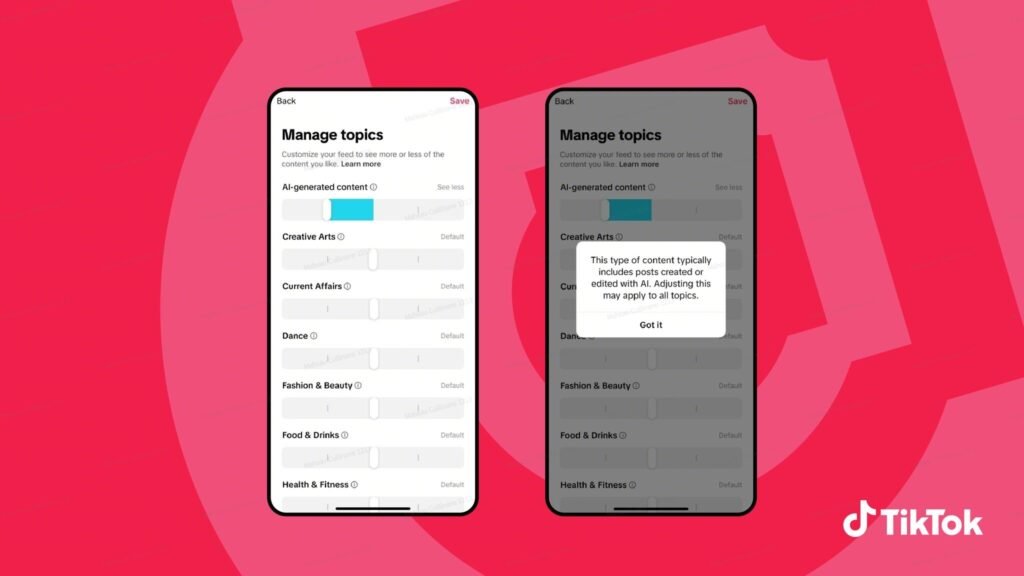TikTok is testing a feature that gives users control over how much artificial intelligence-generated content appears in their feeds.
The ByteDance-owned video-sharing platform announced on Wednesday (November 19) that it will begin testing the feature in the coming weeks through its existing ‘Manage topics’ feature.
Users can adjust a slider to increase or decrease the amount of AI content they see, similar to how they currently adjust their exposure to categories like dance, sports and food and drinks.
TikTok explained: “Like those controls, the AIGC setting is intended to help people tailor the diverse range of content in their feed, rather than removing or replacing content in feeds entirely.”
Instead of eliminating AI content completely, the upcoming feature allows users to adjust their feeds based on personal preference. Someone interested in AI-generated historical content can opt to see more, while others can reduce their exposure, said TikTok.
“Like those controls, the AIGC setting is intended to help people tailor the diverse range of content in their feed, rather than removing or replacing content in feeds entirely.”
TikTok
The announcement comes amid increasing competition between TikTok and other social media giants like Meta and Google. In September, Meta introduced Vibes, a feed within its Meta AI application that is dedicated to AI-generated short videos. Meanwhile, Google announced the same month that it would integrate Veo 3, its latest video generation model, into YouTube.
Also in September, ChatGPT maker OpenAI released a standalone application for Sora 2, its next-generation video creation model to succeed last year’s Sora.
The timing comes amid the growing number of AI-generated videos on TikTok.
In addition to the AI limit, TikTok is also testing “invisible watermarking” technology that will require creators to label realistic AI-generated content on the platform.
TikTok said: “This includes labeling tools we offer creators as well as our own detection models. We also use a cross-industry technology called C2PA Content Credentials, which embeds metadata into content that lets us—as well as other platforms who use C2PA—know when something is AI-generated.”
TikTok says these efforts have resulted in labels on over 1.3 billion videos to date.
The company will apply these watermarks to content created with its tools including AI Editor Pro, and to uploads bearing C2PA Content Credentials. TikTok said the technology will improve labeling and provide more information about changes made to content.
TikTok also announced a $2 million fund for AI literacy education. The money will support experts and organizations, including GirlsWhoCode, to create content teaching users about AI literacy and safety. More than 20 experts across a dozen global markets are participating, with more expected to join.
The company has also committed to sponsor the nonprofit Partnership on AI. TikTok will join two steering committees researching AI’s impact on enterprise and human connection.
TikTok said: “We continue to refine our labeling approach as industry norms and expert guidance evolve, while maintaining firm policies against harmful AIGC. For example, over the last year, we enhanced our AIGC labels by adding more context around whether content was labeled due to our AI detection, creator labels, or TikTok AI tools. We’ll continue to iterate as our industry evolves in the months to come.”
“We continue to refine our labeling approach as industry norms and expert guidance evolve, while maintaining firm policies against harmful AIGC.”
TikTok
Last week, TikTok also launched a new feature that makes it easier for creators with large followings on the platform to communicate and share content with their followers.
The new ‘bulletin board’ feature rolled out globally on November 13, available to all creators aged 18 and over who have at least 50,000 followers.
Music Business Worldwide

